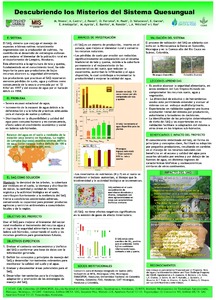Crop-Livestock Interaction in Sub-Sarahan Africa
Describes interactions between cropping & livestock husbandry in an area of Fulani settlement arid farming groups at Abet and in a Fulani agropastoral system at Kurmin Biri, both in subhumid Nigeria, identifying the linkages as being feed from fallow land crop residues (CR) grazing and use of cattle manure in cropping w.
Cropping systems in the subhumid zone of Nigeria
Reports findings of baseline studies as size of cultivated area, cropping patterns, management in relation to fallowing and labour & other inputs, yields and constraints to increasing grain & forage production among traditional crop farmers and Fulani agropastoralists at Abet & Kurmin Biri, both in subhumid Nigeria.
Current and future opportunities for introduced forages in smallholder farming systems in south-east Asia
Livestock in south-east Asia are used for a wide variety of purposes. In many regions, there is an increasing demand for animal protein but, at the same time, increasing population pressure is pushing livestock on to more marginal lands. These marginal lands are generally uplands where soils are acid and infertile.
Dampak krisis ekonomi Indonesia terhadap petani kecil dan tutupan hutan alam di luar Jawa
Twenty million people live in or near Indonesia' s natural forests. The country's humid tropical forests are primarily in Sumatra, Kalimantan, Sulawesi, and Irian Jaya. A devastating regional economic crisis that began in mid-1997 affected Indonesia more strongly than any other country in Asia. A random sample survey of 1050 households was conducted in six outer island provinces to understand the effects of the crisis on the well-being of forest villagers and on their agricultural and forest clearing practices.
Decision support tools for farm-level fertilizer recommendation in Ethiopia
Desho grass (Pennisetum pedicellatum) for livestock feed, grazing land and soil and water management on small-scale farms
Design of a drip irrigation system for an area of 50 Ha in the Chókwè District
Determination des zones agro-ecologiques d'Afrique: travaux et projets du CIPEA
Outlines some of the work being done by ILCA in the field of agroecological zonation and the use of models to predict the effect of environment on pastoral and agricultural systems. Includes plans for future developments and the potential benefits of the work.
Determination of agro-ecological zones in Africa: ILCA activities and expectations
Outlines some of the work being done by ILCA in the field of agroecological zonation and the use of models to predict the effect of environment on pastoral and agricultural systems. Includes plans for future developments and the potential benefits of the work.
Developing a system of temperate and tropical aerobic rice in Asia (STAR)
The project “Developing a System of Temperate and Tropical Aerobic Rice in Asia (STAR) undertook strategic research to develop sustainable aerobic rice systems for water- scarce irrigated and rainfed environments in Asia. Aerobic rice is a production system in which specially developed rice varieties are grown in nonsaturated soils without ponded water just like wheat or maize. The target environments are areas where water is too short to grow conventional lowland rice, either rainfed or supplementary irrigated.









